Having trouble making iconic structures stand out after dark? Simple lighting can look flat and uninspired, failing to capture the public’s imagination and honor the landmark’s significance.
Architects choose RGBW DMX floodlights for their unmatched versatility. They combine dynamic color-changing (RGBW), precise programming (DMX), and broad illumination (floodlights). This mix transforms structures into captivating, dynamic nighttime spectacles that can be easily updated for any event or mood.
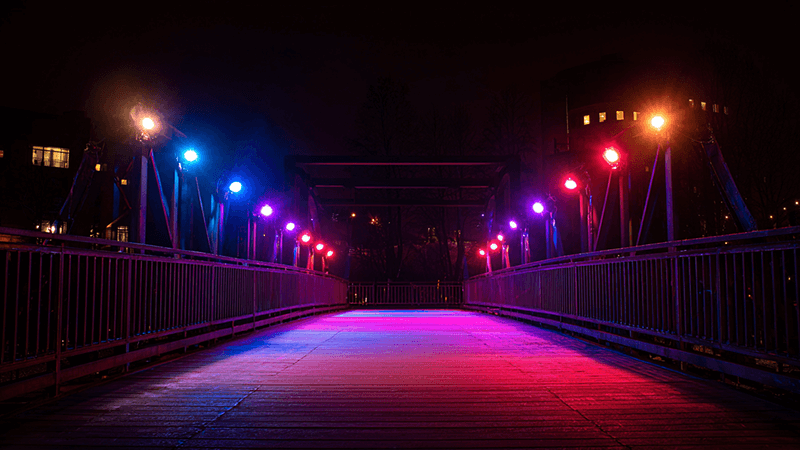
When I first started in this industry, lighting was mostly about making things visible. Now, it’s about telling a story. Seeing a massive bridge come alive with flowing colors for a national holiday is an amazing experience. But how do architects and designers achieve this magic? It’s not just one thing, but a combination of powerful technologies. Understanding each part helps you see why this system is the top choice for our most important landmarks. Let’s break down the core ideas behind it.
What is the purpose of using Uplighting in architectural lighting design?
Is your building lost in the darkness after sunset? Standard downlighting often creates harsh shadows. It can fail to showcase a structure’s impressive height and unique form.
Uplighting aims light upwards to highlight architectural features, create dramatic effects, and increase visual presence. It emphasizes vertical lines and textures, making buildings appear grander and more prominent against the night sky. This technique completely transforms their nighttime identity.
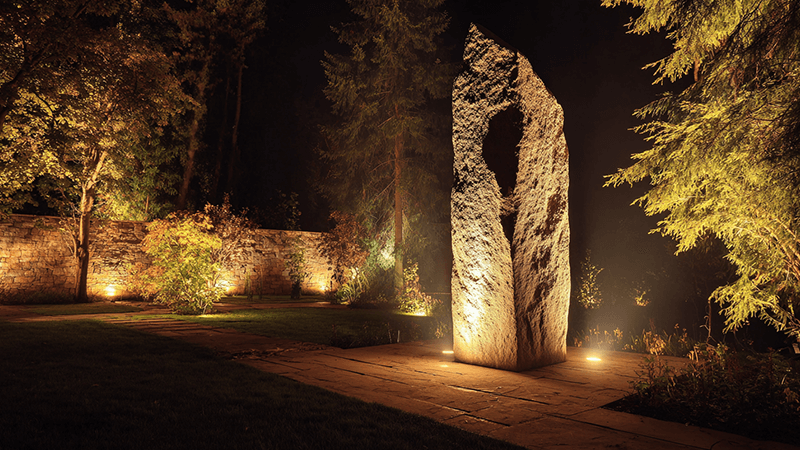
In my experience, uplighting is one of the most powerful tools in a lighting designer’s kit. It’s a simple concept with a profound impact. Instead of lighting a space from above, you direct light from below. This simple change in direction flips our normal perception and lets you paint a building with light in a completely new way. It’s about more than just visibility. It’s about creating a feeling of awe and importance.
Drawing the Eye Upward
The primary effect of uplighting is that it makes things look taller and more majestic. Our eyes naturally follow the direction of light. When you illuminate a column or a facade from the ground up, you are guiding the viewer’s gaze along the vertical lines of the building. This accentuates its height and creates a sense of grandeur that is often lost during the day. I remember a project we supplied for a historic clock tower. During the day, it was just part of the skyline. At night, with carefully placed uplights, it became the undisputed focal point of the entire town, looking twice as tall and ten times more impressive.
Creating Drama with Light and Shadow
Uplighting is also fantastic for revealing texture. When you place a light fixture close to a surface and aim it upwards at a steep angle, a technique we call "grazing," it creates long, dramatic shadows across the surface. This is perfect for materials like old stone, brick, or textured concrete. The light catches the high points while the low points fall into deep shadow, making the texture pop. This adds a rich layer of depth and character to the building that a flat wash of light would completely erase. It gives the structure a sense of history and substance.
Defining Space and Form
By strategically placing uplights, an architect can define the shape and volume of a building at night. You can use light to trace the outline of a bridge’s arches or highlight the powerful supports of a monument. This separates the structure from the dark background and carves its form into the night sky. It’s like creating a new, luminous version of the building that only exists after sunset. This control over form is why uplighting is not just decorative; it’s a fundamental part of modern architectural expression.
| Aspect |
Uplighting |
Standard Downlighting |
| Effect |
Creates drama, accentuates height |
Provides functional, general illumination |
| Shadows |
Long, soft shadows that reveal texture |
Hard, short shadows that can obscure detail |
| Best For |
Facades, columns, monuments, trees |
Pathways, entrances, work areas |
| Perception |
Makes structures feel grand and important |
Makes spaces feel grounded and functional |
What are the different types of lighting in architecture?
Are you feeling overwhelmed by all the different lighting options? Choosing the wrong type can ruin a great architectural design. It might create too much glare, not enough light, or just a bland, forgettable atmosphere for your project.
Architectural lighting is categorized by its function. The main types are ambient for general light, task for focused work, and accent for decoration. These are achieved using techniques like uplighting, downlighting, wall washing, and grazing to shape the visual environment.
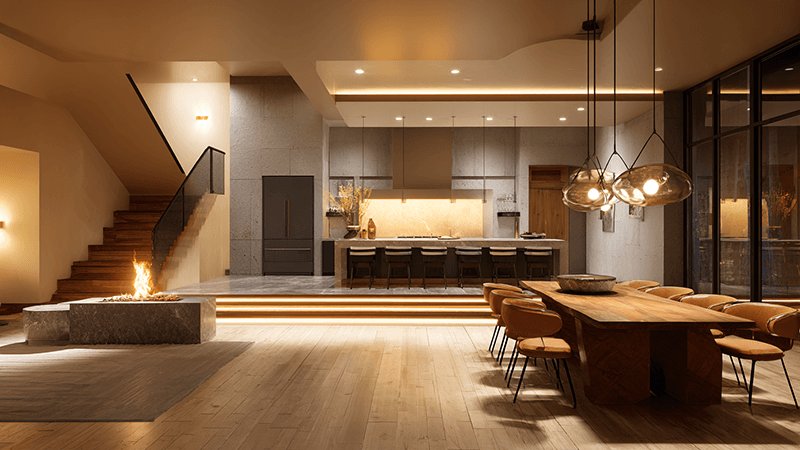
When I work with clients like Shaz, a key part of our discussion is always about layering light. It’s never about just one type of fixture. A successful lighting plan is like a good recipe; it uses different ingredients in the right amounts to create a perfect final result. Thinking about lighting in terms of layers and techniques helps simplify the process and ensures every part of the building serves its purpose, both practically and aesthetically.
The Three Layers of Light
Most lighting designers start with three basic layers. First is Ambient Lighting, which is the general, overall illumination of a space. It’s the base layer that makes a space safe and usable. Second is Task Lighting, which is focused light for specific activities, like reading a sign or walking up a set of stairs. Finally, there’s Accent Lighting, which is the most artistic layer. It’s used to draw attention to specific features like a statue, a textured wall, or the peak of a roof. A great design balances all three. You need enough ambient light to see, task light to function, and accent light to create interest and beauty.
Common Architectural Lighting Techniques
To create these layers, we use several key techniques. Each one produces a different effect and is suited for a different purpose. I’ve seen these used to great effect on projects all over the world, from Dubai to Shanghai.
- Wall Washing: This technique creates a smooth, even layer of light across a large, flat surface. You place the fixtures at a distance from the wall to let the light spread out. It’s great for making a space feel brighter and more open and for hiding surface imperfections.
- Wall Grazing: This is the opposite of wall washing. You place the fixture very close to the wall to create strong shadows that highlight texture. This is perfect for bringing out the character of materials like stone, brick, or corrugated metal.
- Uplighting: As we discussed, this involves directing light upwards to emphasize height and form. It’s fundamental for lighting columns, trees, and the facades of tall buildings.
- Downlighting: This is the most common form of lighting, directing light downwards from the ceiling or a high perch. It’s great for task and ambient lighting. In an outdoor architectural context, it’s used for pathways, entrances, and canopies.
Understanding these options is key for a purchasing manager like Shaz. Knowing the difference helps ensure you’re sourcing the right product for the designer’s vision.
| Technique |
Purpose |
Best For |
| Wall Washing |
Create a smooth, uniform light |
Flat, smooth surfaces, making spaces feel bigger |
| Wall Grazing |
Create dramatic shadows, reveal texture |
Rough, textured surfaces like stone or brick |
| Uplighting |
Accentuate height and form from below |
Columns, facades, trees, monuments |
| Downlighting |
Provide functional light from above |
Pathways, entrances, general area illumination |
Why is lighting important in architectural design?
Does your beautiful building simply disappear after the sun goes down? Without a proper lighting plan, your architectural vision is only visible half the time. It loses all its impact and value overnight.
Lighting is crucial because it defines form, space, and atmosphere after dark. It enhances safety, guides people, and creates emotion. It transforms a static structure into a dynamic, 24-hour experience, revealing and completing the architect’s original vision.
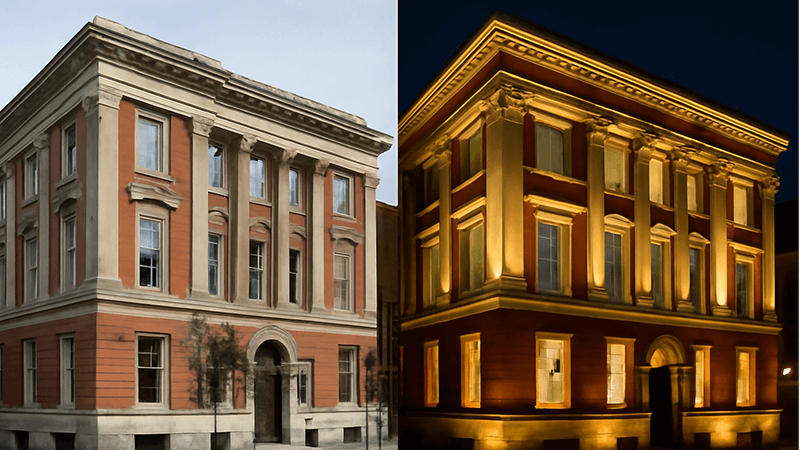
I’ve learned over 20 years in this business that light is as important as any physical building material. An architect can use steel, glass, and concrete to create a form, but they must use light to give that form a life after dark. Without light, a billion-dollar skyscraper and a simple warehouse are the same at midnight: just a dark shape against the sky. Good lighting is what allows architecture to continue communicating its message, 24 hours a day.
More Than Just Visibility: Shaping Perception
The most exciting part of lighting design is its power to shape how people feel. Bright, warm light can make a public plaza feel welcoming and festive. Cool, soft light on a monument can create a sense of peace and reverence. This is where color comes into play. With modern RGBW lights, we can paint with light, creating a vibrant, carnival atmosphere or a solemn, respectful mood with the push of a button. Light gives architects the power to control the emotional narrative of their buildings, making them active participants in the life of a city.
Function and Safety
Of course, lighting also has a very practical job. On a grand scale like a bridge, good lighting is a matter of public safety. It needs to illuminate roadways and walkways clearly, without creating dangerous glare for drivers or pedestrians. It helps with wayfinding, guiding people across a complex structure or through a large public park. For monuments, lighting provides security, deterring vandalism and making the area feel safe for evening visitors. When we design a lighting system, function and safety are always the foundation upon which we build the more artistic layers. A beautiful design that is unsafe is a failed design.
Economic and Community Value
Never underestimate the economic power of good lighting. A beautifully lit bridge or monument becomes an icon, a postcard image for the city. It draws tourists, photographers, and local residents. It becomes a source of civic pride. I supplied lights for a city that revitalized its riverfront with a new lighting scheme. The area, once quiet at night, is now full of people enjoying the view, and new cafes and shops have opened to serve them. By investing in lighting, the city created a new destination, boosting the local economy and strengthening the community. It’s a clear return on investment that goes far beyond the initial cost of the fixtures.
Are you confused by all the different terms like "floodlight," "spotlight," and "inground luminaire"? Choosing the wrong fixture can lead to poor performance, high maintenance costs, and a completely failed lighting design.
Architectural light fixtures are luminaires specifically designed to integrate with a building’s design. They are chosen for both their physical appearance and their specific light output, such as floodlights for broad coverage or spotlights for sharp accents.
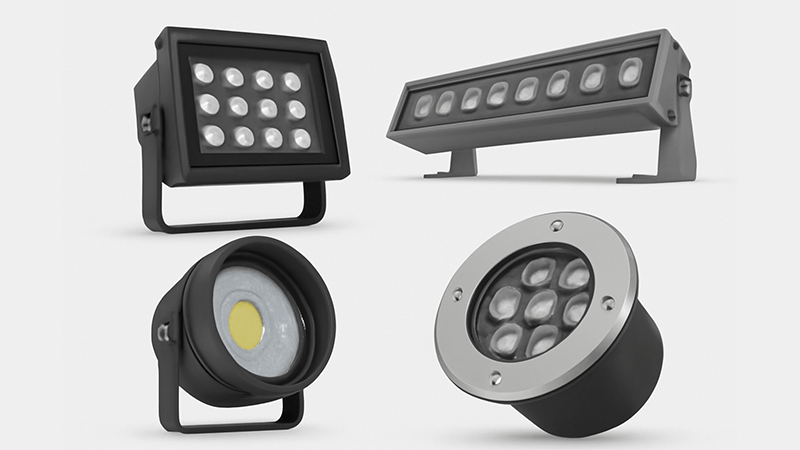
This is where the technical details meet the artistic vision. As a manufacturer, this is my world. An architect might have a brilliant idea, but they need the right tool to make it a reality. A purchasing manager like Shaz needs to find that exact tool. That tool is the light fixture itself. For large structures like bridges and monuments, the most powerful and versatile tool is the RGBW DMX floodlight. Let’s break down why this specific fixture is the one architects demand.
The Workhorse: Floodlights
First, the fixture type is a floodlight. The name says it all. It’s designed to flood a large area with a wide, uniform beam of light. A bridge might be hundreds of meters long, and a monument can be many stories high. You need a powerful fixture with a wide beam angle to cover these massive surfaces evenly without creating distracting hot spots. My factory produces floodlights ranging from small ones for details to massive ones for skyscrapers. For bridges and monuments, their ability to project a huge amount of light over a long distance makes them the obvious starting point.
The Artist’s Palette: RGBW Technology
Next comes the light source itself: RGBW. RGB stands for Red, Green, and Blue. By mixing these three primary colors of light, you can create millions of different hues. But there’s a problem with standard RGB: it can’t create a high-quality, pure white light. That’s where the "W" comes in. It’s a dedicated white LED chip. This is incredibly important. It means a bridge can be lit in a pure, elegant white for 99% of the year, then instantly transform into a vibrant rainbow for a festival. It offers total flexibility, from solemnity to celebration.
The Conductor’s Baton: DMX Control
The magic that ties it all together is DMX (Digital Multiplex). DMX is a digital communication protocol. Think of it as the nervous system for the lighting installation. It allows a central controller to send precise instructions to every single light fixture. You can tell fixture #1 to be red, fixture #2 to be blue, and fixture #3 to slowly fade to green. This is what turns a static building into a dynamic canvas. It allows for flowing colors, twinkling effects, and perfectly synchronized light shows. DMX makes the light a programmable "pigment" that brings the architecture to life.
Putting It All Together: The Future-Proof System
When you combine a powerful Floodlight with versatile RGBW color and precise DMX control, you get a system that is incredibly capable and, crucially, future-proof. Once the hardware is installed, you never need to touch it again to change the look. If the city wants to celebrate a national holiday, support a sports team, or raise awareness for a cause, they don’t need new hardware. They just need a new program uploaded to the controller. This adaptability is invaluable.
| Feature |
Static White Lighting System |
RGBW DMX System |
| Color |
Single color (e.g., warm white) |
Millions of colors + dedicated pure white |
| Control |
Simple On/Off or basic dimming |
Individual fixture control, dynamic effects, scene programming |
| Adaptability |
Hardware change required for a new look |
New looks created instantly via software updates |
| Application |
Basic, static illumination |
National holidays, special events, artistic expression, daily elegance |
Conclusion
In the end, RGBW DMX floodlights give architects total creative control. They turn static structures into dynamic, expressive landmarks that can adapt to any occasion, truly blending technology with art.